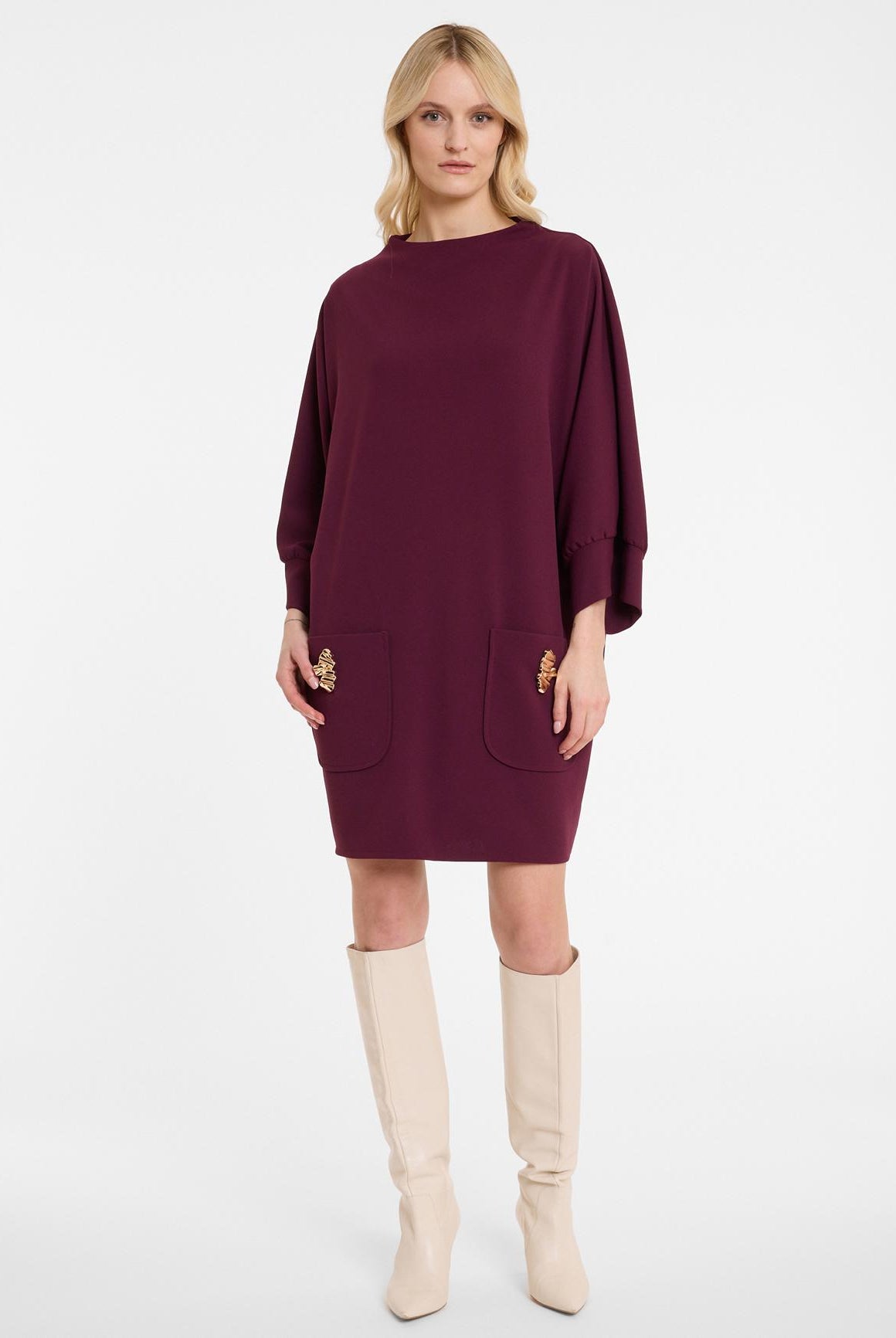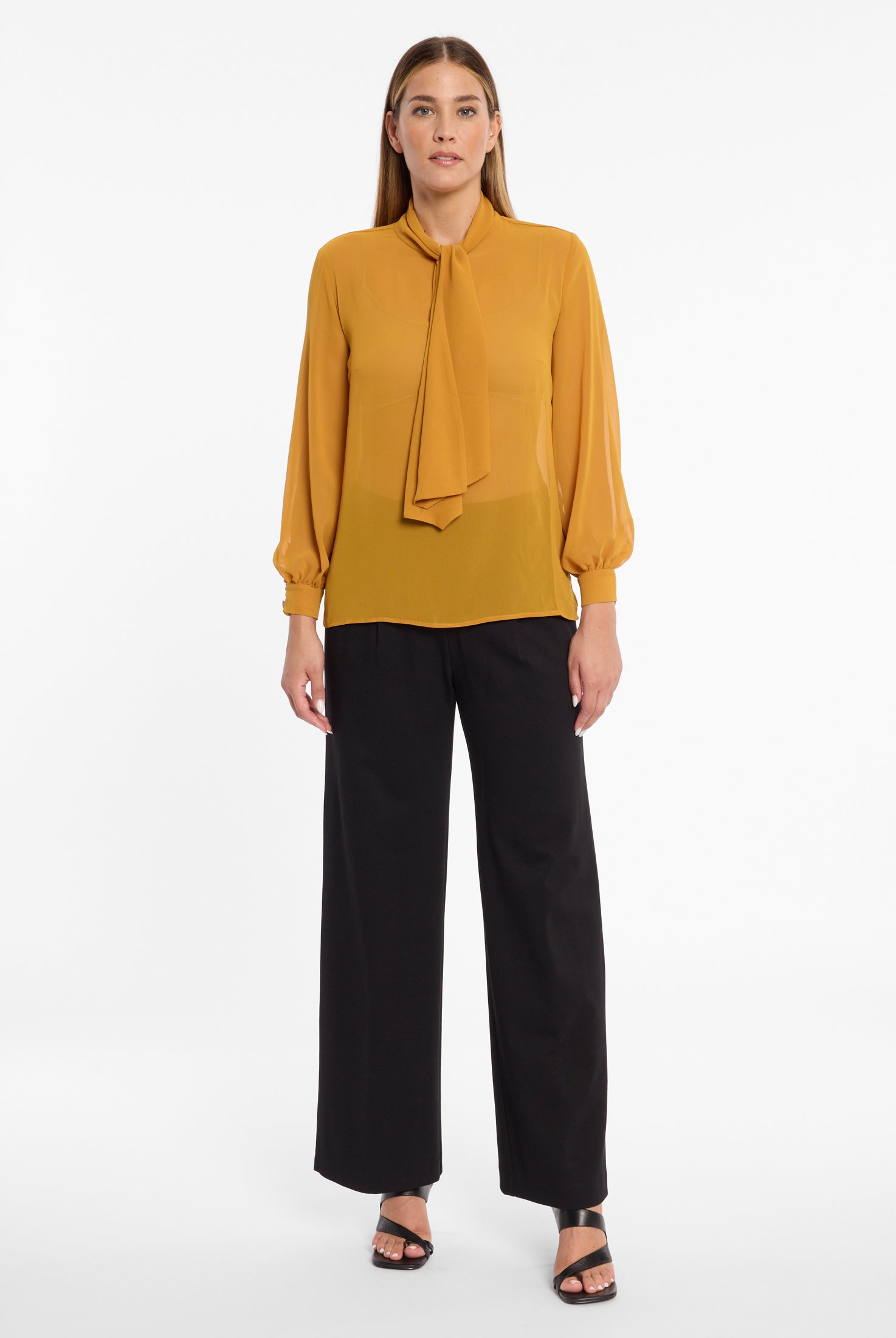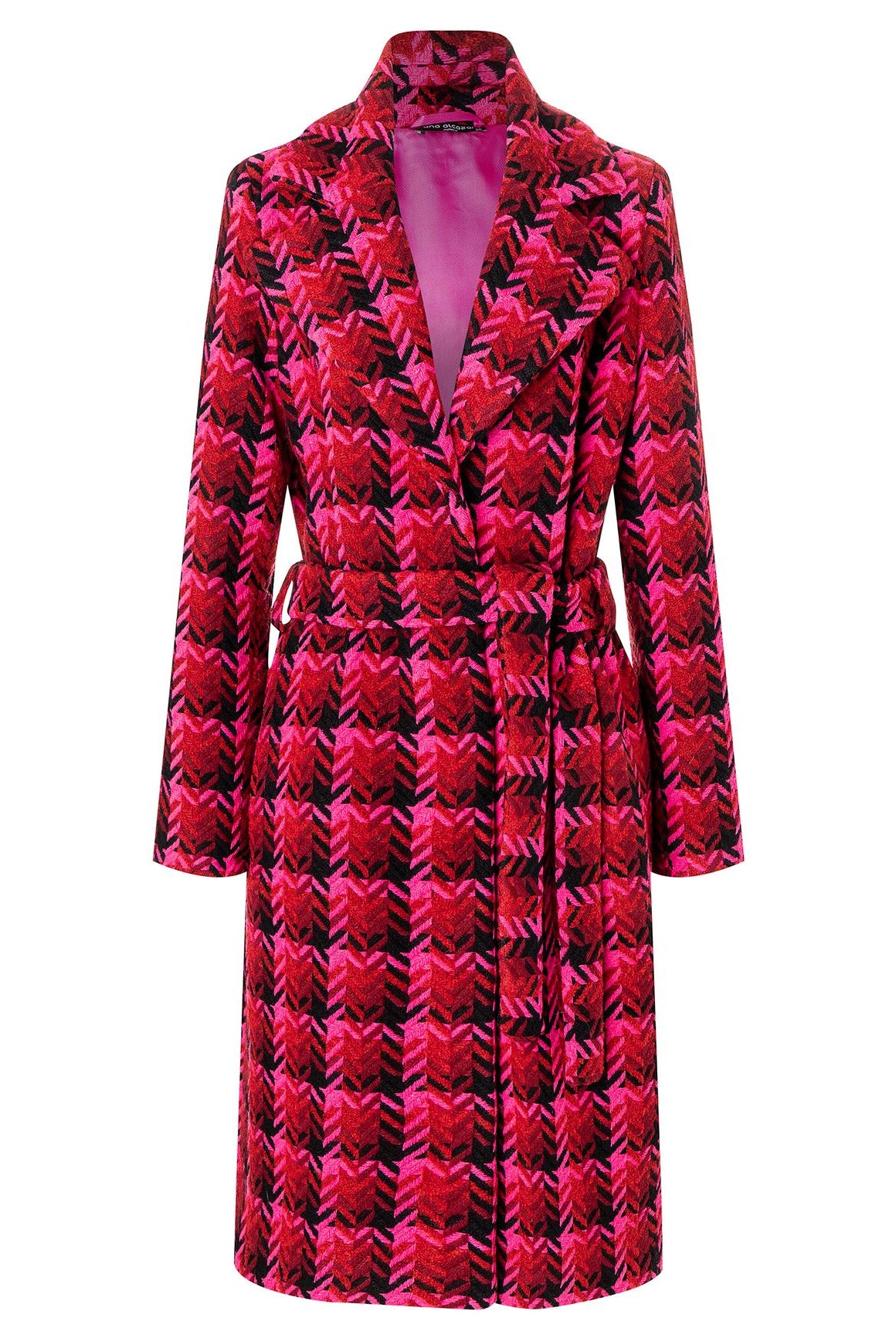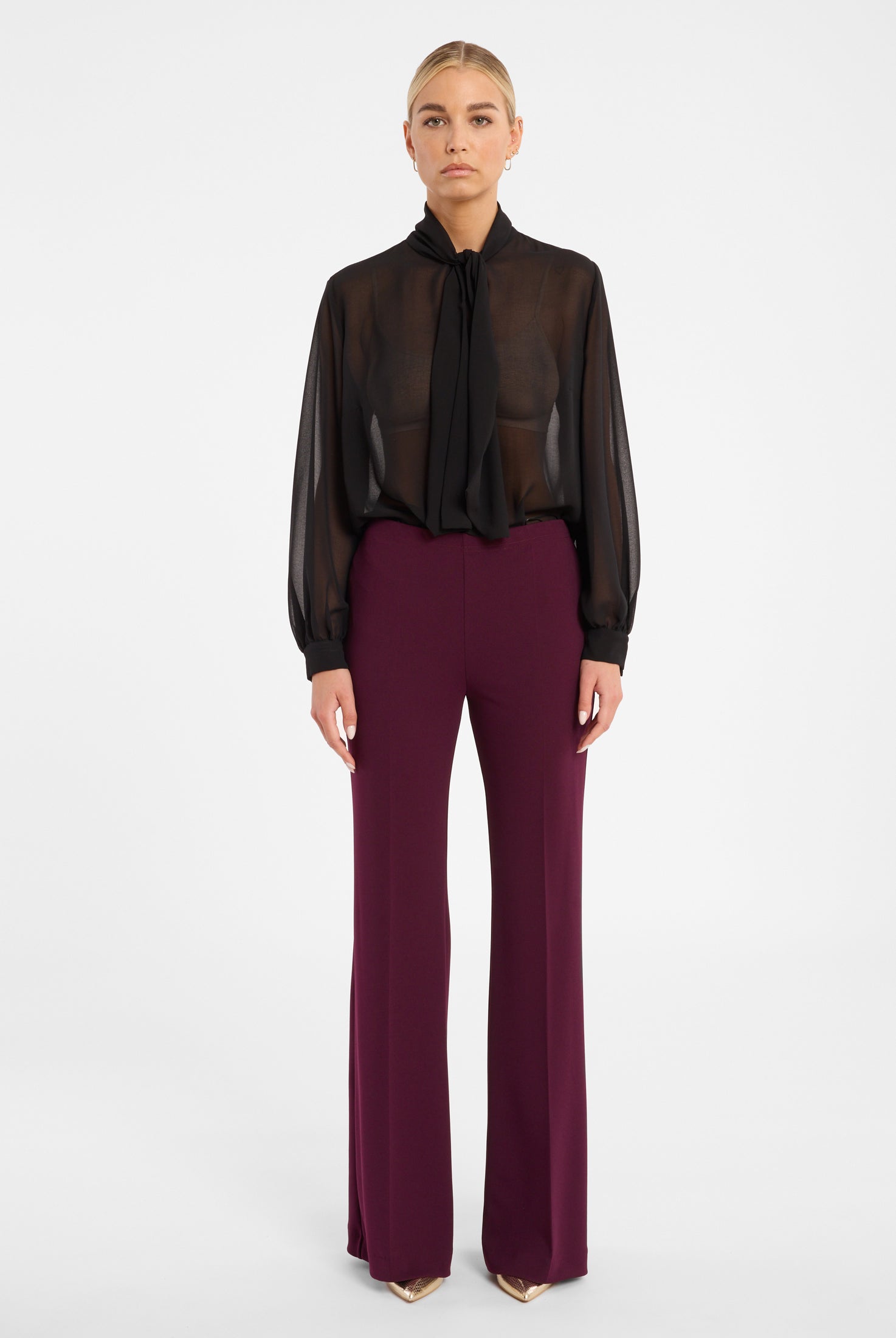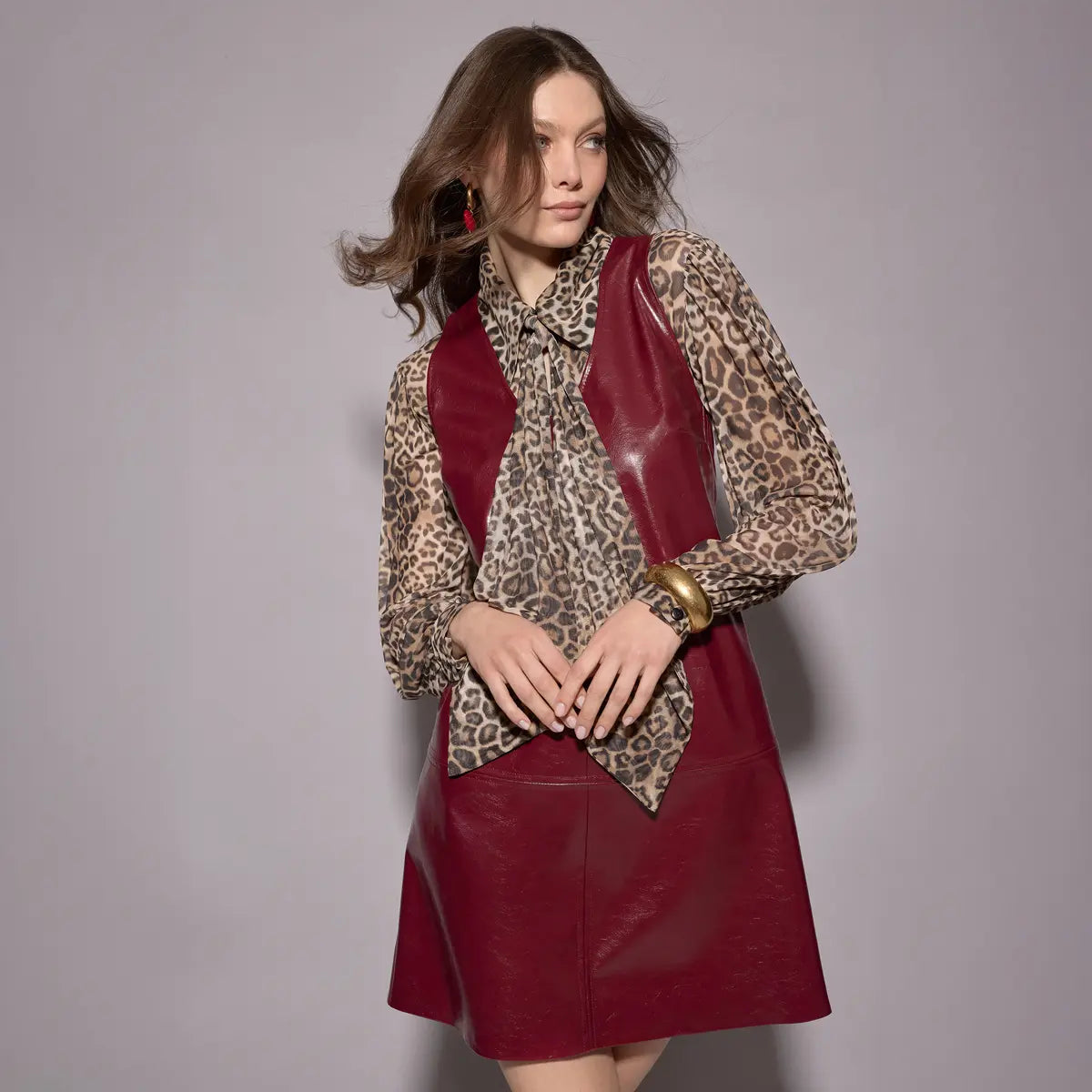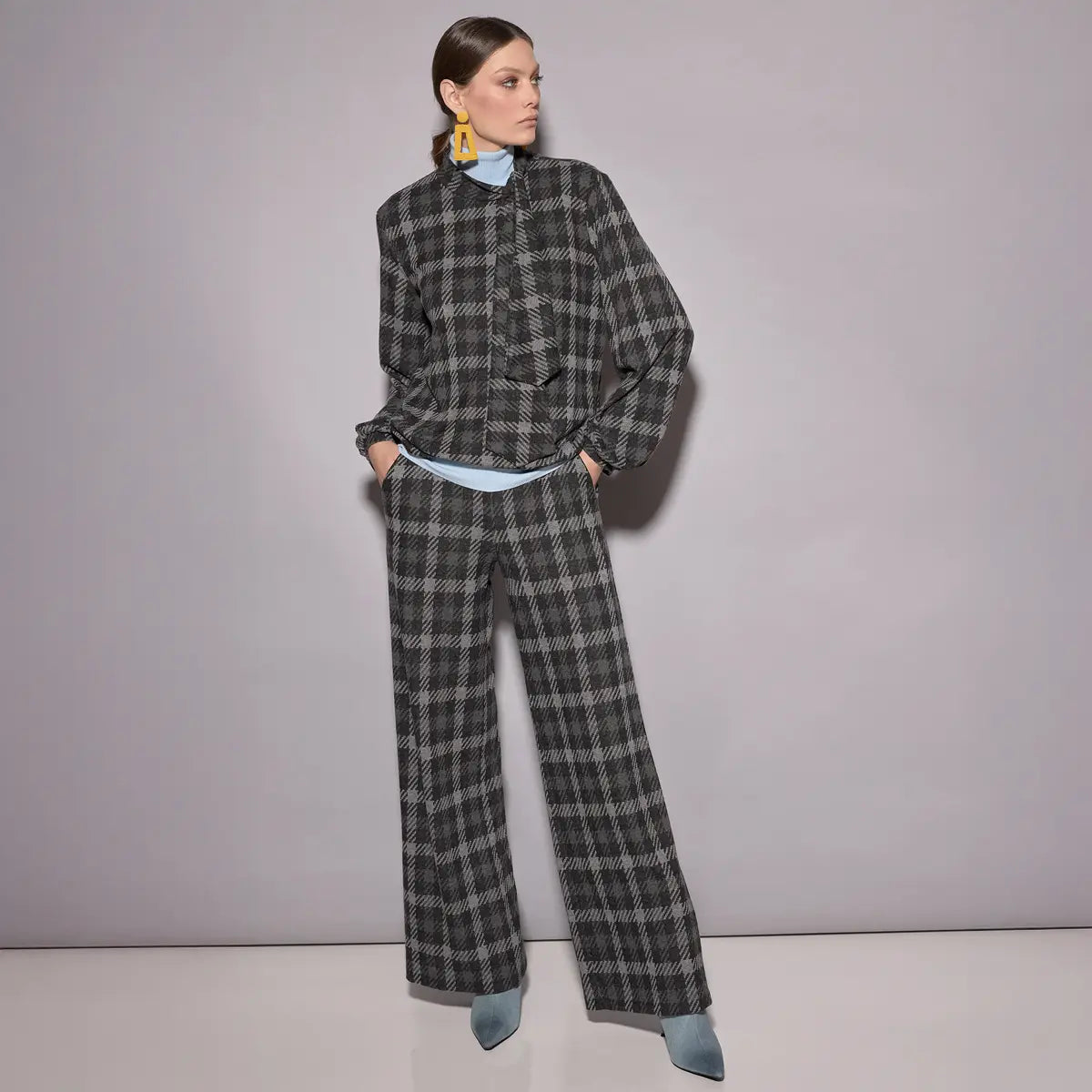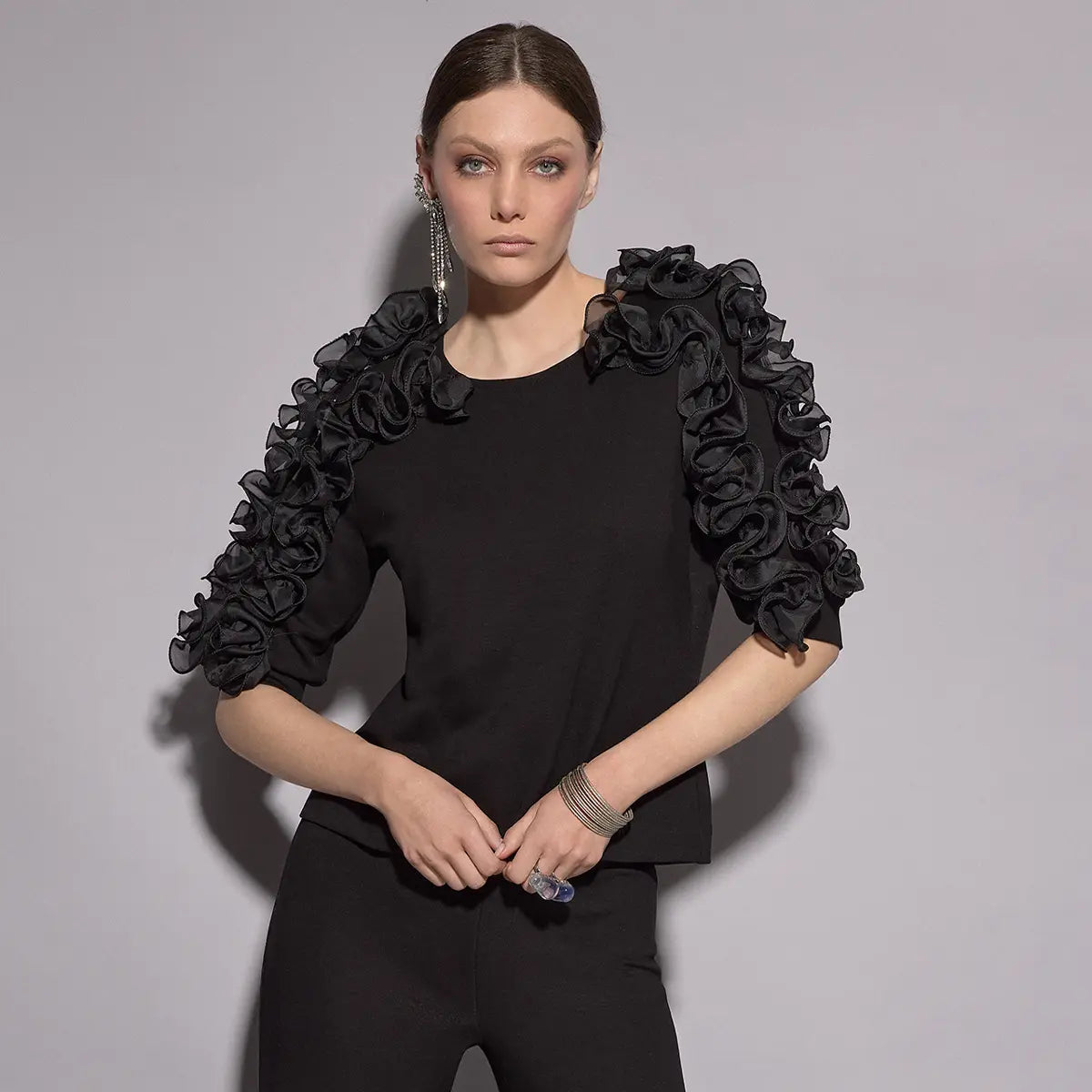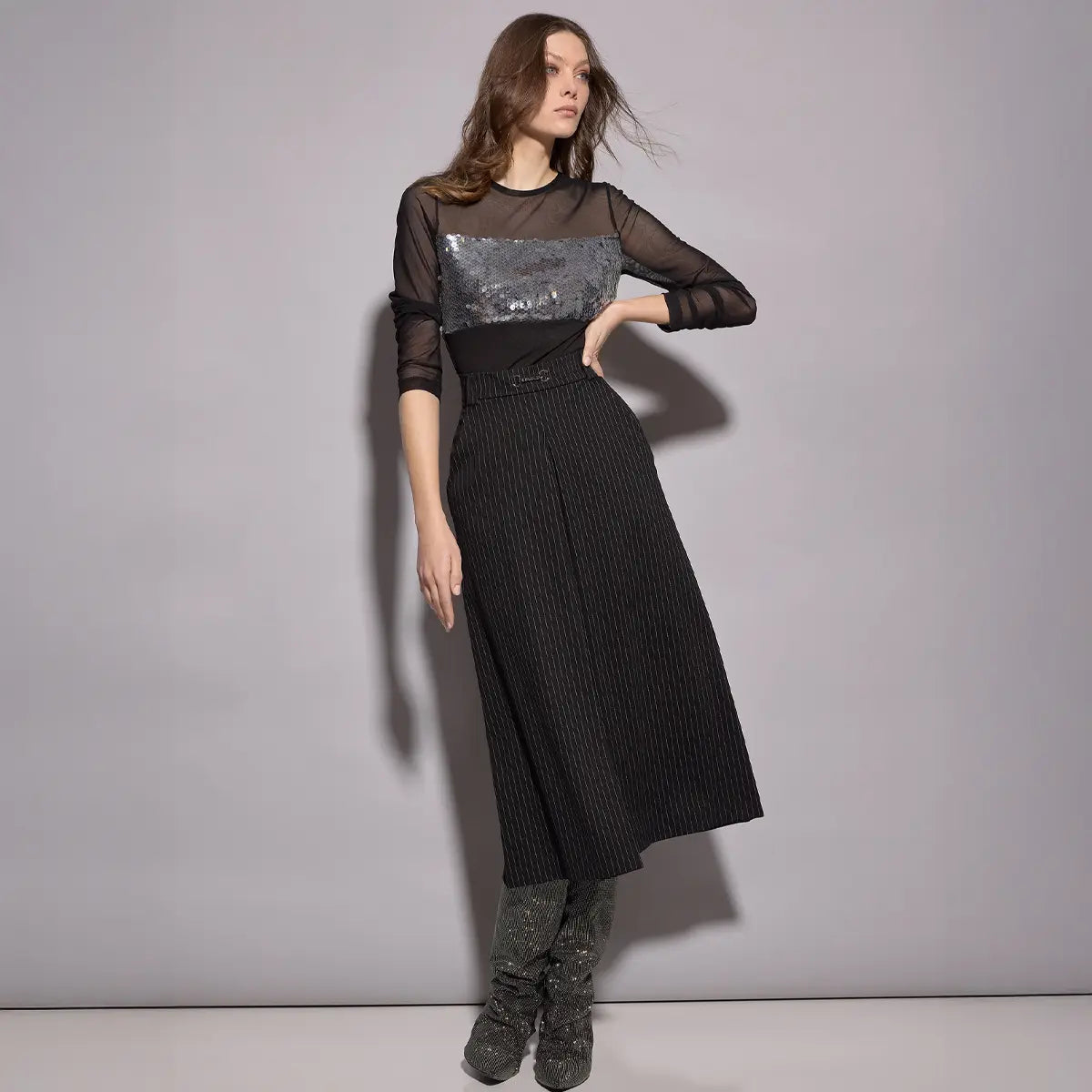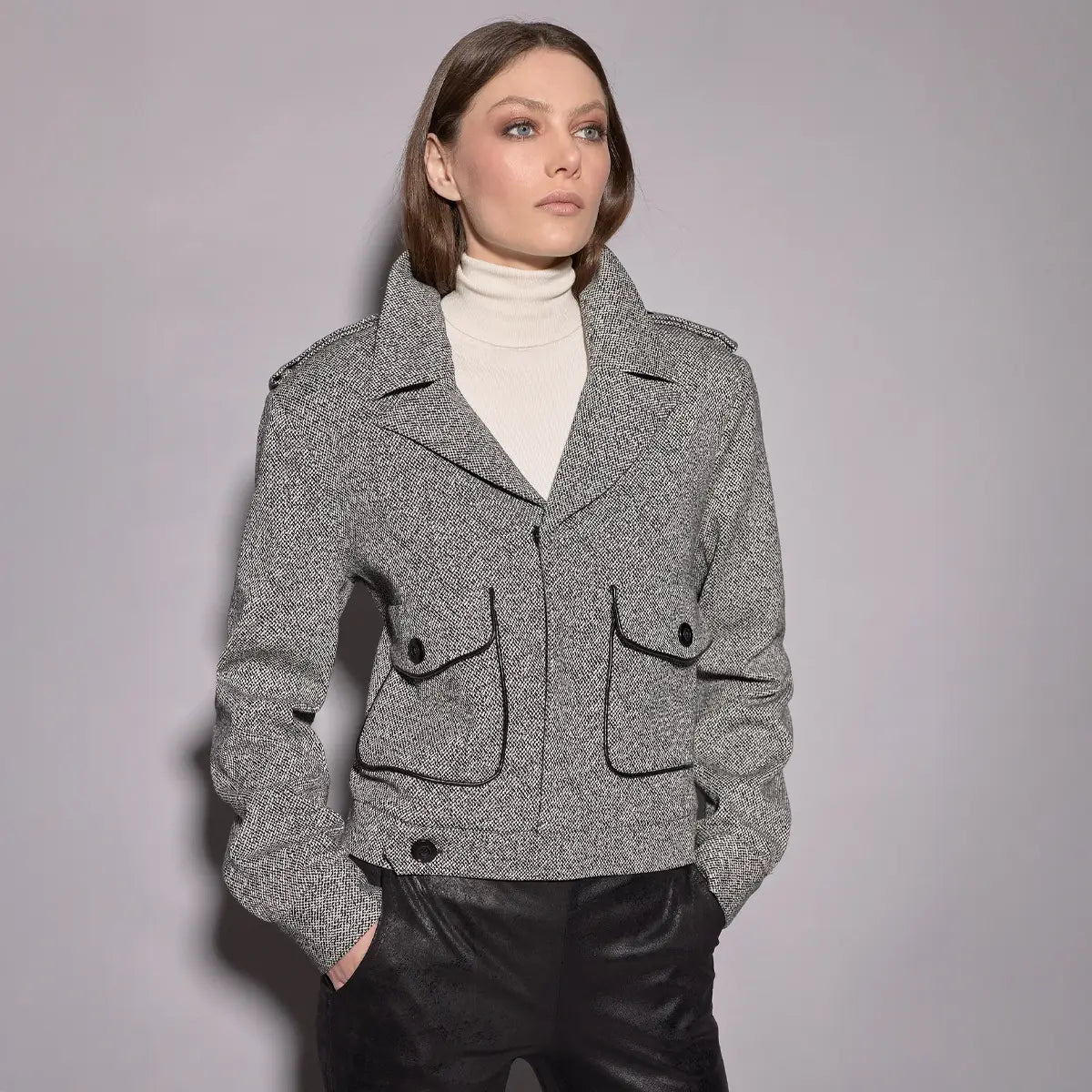Layering means "to layer"
Layering is about combining pieces of different lengths into a coherent outfit. At its core, the so-called “creating layers” is nothing more than the fashionable interpretation of the pragmatic onion look against the cold: a long-sleeve under a jumper, under a cardigan, under a parka. In the stylish version of the layered look, individual pieces are deliberately worn on top of each other so that each layer remains visible and peeks through. This creates an exciting tiered effect that makes outfits dynamic and unique.
Playing with materials is equally essential: short over long, a dress over trousers, knitwear over lace and faux leather. Experimentation is expressly encouraged. Horizontal lines interact with vertical accents. Opposites attract: opacity meets transparency, wide balances with slim, faux fur blends in everywhere and creates surprising effects.
Playing with fabrics makes all the difference: short over long, dresses over trousers, knitwear over lace and faux leather. Experimentation is explicitly encouraged. Horizontal lines meet vertical shapes, opaque fabrics contrast with transparency, oversized pieces balance with slim fits, and faux fur adds its own luxurious twist.
“Layering is all about balance and harmony. Combining different lengths, fabrics and shapes into a cohesive outfit takes a little practice. Experiment with different options and take the time to create a layered look that feels authentically yours.”
Be & Ju Illzhöfer, Design Duo Ana Alcazar
Layering Looks – How to Master the Trend
Style is the most important foundation. Layering is the opposite of simply throwing random pieces together. While it can make summer staples like maxi dresses winter-ready, the essence of layering lies in the refined play of silhouettes and proportions. Poorly combined pieces can add bulk or make the figure appear wider.
Done correctly, however, layering outfits create a look that balances elegance, excitement and individuality. By following a few simple rules regarding proportions, lengths, materials, colours and prints, every layering look becomes a success – turning you into a true master of the trend.

Proportions are the Key
When creating a layered outfit, always keep the overall silhouette in mind. The aim is to give depth without adding unnecessary volume. The easiest way is to alternate between fitted and wide-cut pieces. A chunky, oversized jumper works best with slim-cut trousers or leggings. A flowing maxi dress gains new shape when paired with a fitted short waistcoat.
Oversized styles are effective, but only if balanced with narrow garments. For instance, skinny jeans combined with an XXL blouse, an oversized slipover and a long coat create a bold statement. The trousers balance the silhouette, while a wide belt worn over the coat adds a feminine touch.
Oversized pieces also make sense, but only when paired with tighter garments to maintain harmony. For example: skinny jeans with an XXL blouse, an oversized slipover and a long coat create a striking look. The trousers balance the silhouette, while a wide belt cinched at the waist adds a feminine finish.

Playing with Lengths and Shapes
The special appeal of layering looks lies in unexpected combinations emphasised by different lengths. Optical “steps” where fabric layers peek out here and there are a must. It is important that each layer is clearly visible and helps structure the outfit. This makes short waistcoats, sleeveless slipovers and fitted rollnecks popular layering pieces. Rollnecks work perfectly under colourful printed maxi dresses.
Cardigans and long coats are also ideal for adding visual tiers, especially when styled with wide-leg Marlene trousers. Flowing black-and-white dresses or classic shirt dresses with graphic patterns become striking when layered over long trousers and styled with fitted waistcoats. No other trend gives you so much freedom to shape and sculpt your figure.
An added benefit: clever layering hides small problem areas with ease. If you are petite, make sure that the longest top ends around mid-thigh to maintain a flattering, elongated silhouette.

Materials Add Excitement
As important as proportions and lengths is the mix of fabrics. Layering thrives on contrasts. Chunky knitwear looks striking against sleek faux leather, delicate silk gains power next to faux fur, shimmering lurex blends surprisingly well with wool, and light chiffon sets highlights when combined with denim.
The more diverse the materials, the more unique the result. Accessories like oversized knitted scarves or fine silk scarves add the finishing touch to a layering outfit.

Colours – the Ultimate Challenge
When layering colours, a refined sense of balance is needed. Particularly harmonious are soft tonal combinations such as off-white with beige and nude, or black with grey and blue. Varying shades of grey are also a guarantee of an elegant look. For a bolder approach, focus on one statement colour and support it with neutrals or pastels.
The recipe for maximum impact: create a monochrome layering outfit in a striking colour such as pink or red – guaranteed to turn heads.

Layering with Prints – Yes, it Works!
Prints are more than welcome in layering outfits. If you wear one print piece, the other garments should pick up one or more colours from the pattern. Combining several prints is more challenging, but perfectly possible. The golden rule: every pattern should share at least one colour. For beginners, two prints with black or white are an easy start.
For advanced stylists, bold pairings such as checks with stripes or animal prints with polka dots create spectacular looks. Classic motifs such as checks, stripes, florals, animal patterns or dots mix surprisingly well and give layering outfits their unique personality.
Layering Looks – Style is the Essential Basic
Layering does not mean throwing clothes together randomly. It is about the sophisticated play with silhouettes, proportions and style. Of course, layering has a practical benefit, for example making a maxi dress winter-ready.
But above all, it is a stylistic statement: layers are intended to emphasise the figure, create depth and add personality to an outfit. When the wrong pieces are combined carelessly, the result can easily resemble the Michelin Man or make the silhouette appear bulkier than it is. A few simple rules regarding proportions, lengths, materials, colours and prints ensure that every layered look is successful.

Do’s – How to Nail Your Layering Outfit
Mix & Match Fabrics
Faux leather, lace, chunky knit or faux fur – the secret to the perfect layering look lies in a bold material mix. The more contrasting the textures and structures, the more dynamic your overall outfit.
Play with Lengths
Let individual layers peek through intentionally. Hemlines should differ clearly – this creates the typical tiered silhouette that makes layering outfits so striking.
Keep the Silhouette Balanced
Always watch the proportions. If your look gets too bulky, balance it out with a fitted piece or define your waist with a wide belt – even over oversized coats.
Use Colours with Intention
Tone-on-tone combinations in cream, beige and brown look elegant, while black, grey and blue remain timeless. For a wow effect, go for monochrome layering looks in statement colours such as pink or red.

Don’ts – Layering Mistakes to Avoid
Too Many Layers
Even in layering, less is more. Three visible layers are enough – anything more makes the outfit look overloaded.
Too Much Volume
Excess fabric around the hips or upper body can overwhelm even the most stylish layering outfit. Alternate lighter fabrics with heavier ones to keep the silhouette sleek.
Colour Overload
A random colour explosion can quickly shift your look from stylish to chaotic. Instead, choose one statement shade and combine it with neutral tones.
Over-accessorising
Layering looks already make a strong statement, so keep accessories minimal. A delicate chain, elegant bangles or one standout necklace provide the perfect finishing touch without stealing the show.
Create Your Own Layering Look
The beauty of layering lies in its versatility. With a little creativity, old jumpers, blouses or dresses can be reinvented into exciting new outfits. Existing pieces gain a fresh twist when styled cleverly – sustainable, individual and right on trend. Especially vintage-inspired looks unfold their full charm when combined in layers.
Take the time to create your own layering look, experiment with colours, fabrics and shapes and discover the mix that suits you best.






